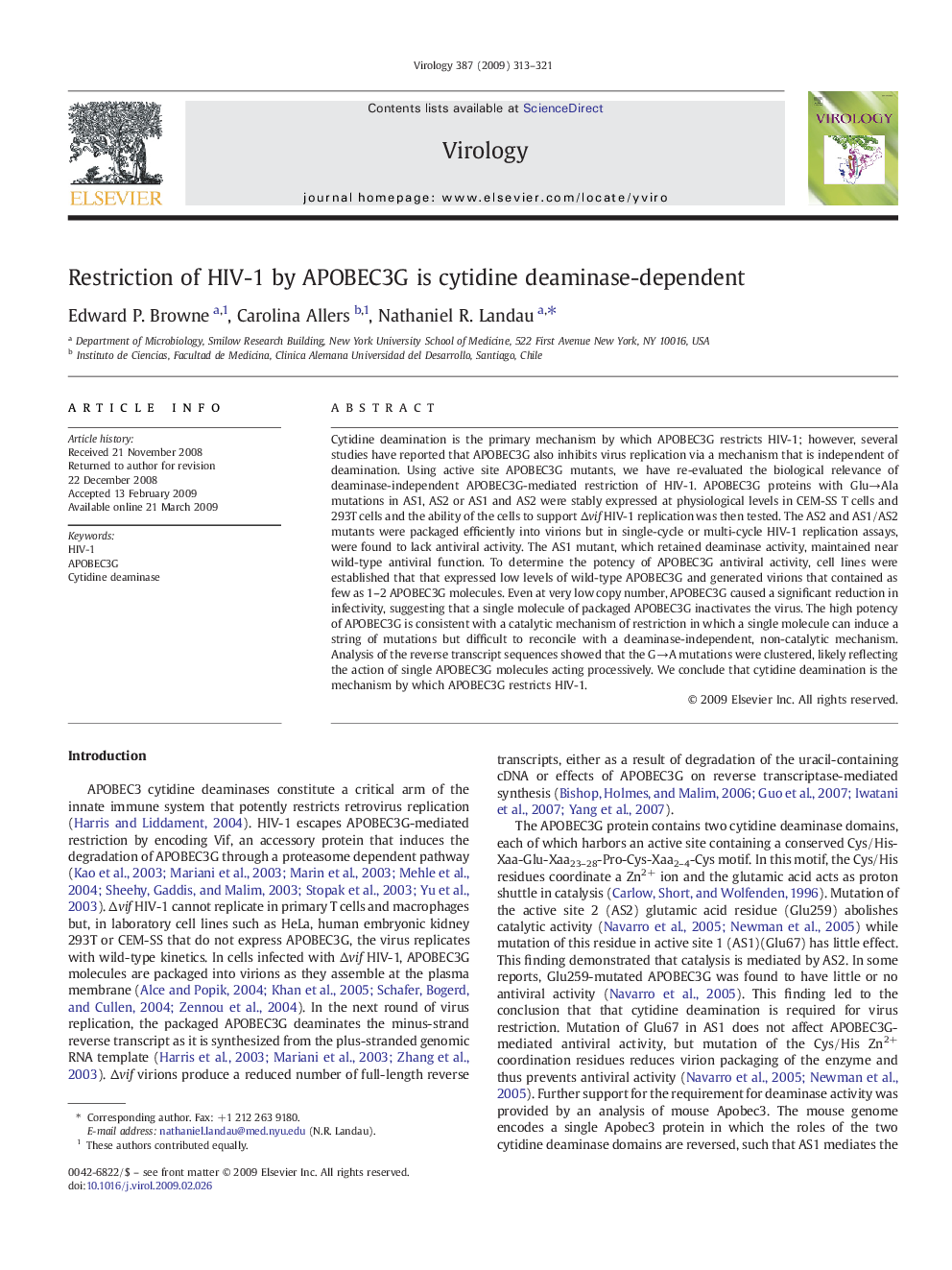| Article ID | Journal | Published Year | Pages | File Type |
|---|---|---|---|---|
| 3425199 | Virology | 2009 | 9 Pages |
Cytidine deamination is the primary mechanism by which APOBEC3G restricts HIV-1; however, several studies have reported that APOBEC3G also inhibits virus replication via a mechanism that is independent of deamination. Using active site APOBEC3G mutants, we have re-evaluated the biological relevance of deaminase-independent APOBEC3G-mediated restriction of HIV-1. APOBEC3G proteins with Glu→Ala mutations in AS1, AS2 or AS1 and AS2 were stably expressed at physiological levels in CEM-SS T cells and 293T cells and the ability of the cells to support Δvif HIV-1 replication was then tested. The AS2 and AS1/AS2 mutants were packaged efficiently into virions but in single-cycle or multi-cycle HIV-1 replication assays, were found to lack antiviral activity. The AS1 mutant, which retained deaminase activity, maintained near wild-type antiviral function. To determine the potency of APOBEC3G antiviral activity, cell lines were established that that expressed low levels of wild-type APOBEC3G and generated virions that contained as few as 1–2 APOBEC3G molecules. Even at very low copy number, APOBEC3G caused a significant reduction in infectivity, suggesting that a single molecule of packaged APOBEC3G inactivates the virus. The high potency of APOBEC3G is consistent with a catalytic mechanism of restriction in which a single molecule can induce a string of mutations but difficult to reconcile with a deaminase-independent, non-catalytic mechanism. Analysis of the reverse transcript sequences showed that the G→A mutations were clustered, likely reflecting the action of single APOBEC3G molecules acting processively. We conclude that cytidine deamination is the mechanism by which APOBEC3G restricts HIV-1.
